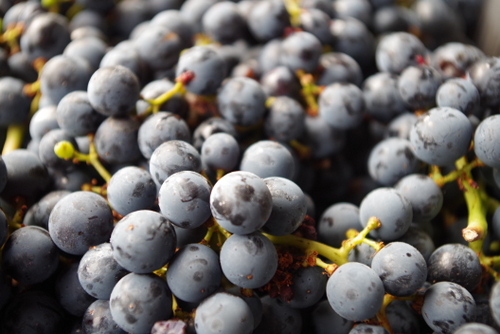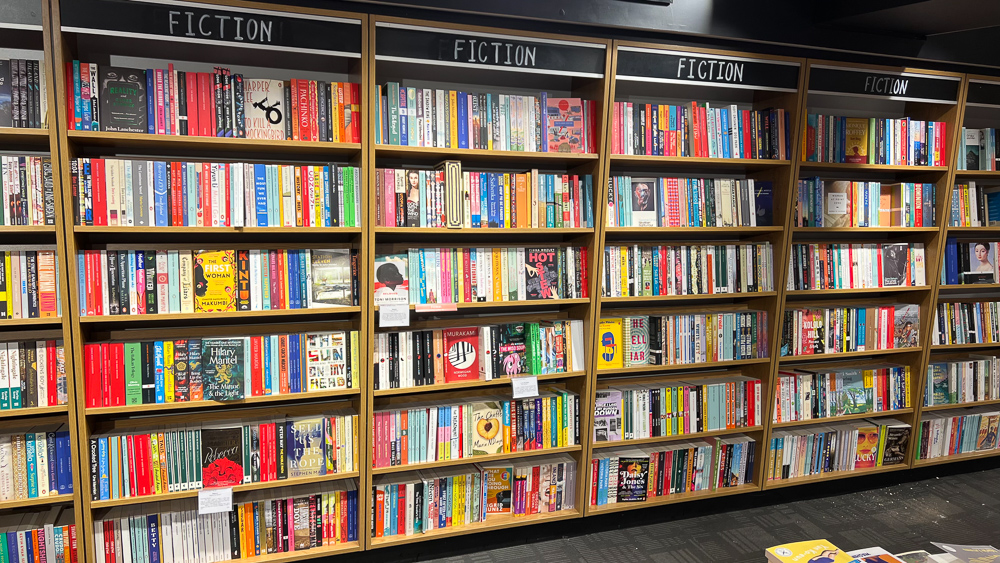Has the case for grape varieties been overstated? Do we make too much of them?
Andrew Jefford thinks so.
Writing in his latest blog for Decanter he argues that:
Too much ‘varietal thinking’… may inhibit and shackle wine appreciation. If we were to regard place and the cultural traditions of place as the primary translators of wine flavour, and variety as secondary and anecdotal, we’d be wiser wine lovers.
Wine grape varieties has become a hot topic, as the success of the remarkable Wine Grapes shows. Personally, I’m right behind the quest for unusual or near-extinct varieties. But I also think Jefford has a very good point.
What makes a wine interesting? The grape variety? Not really. It’s the soil. Of course, you need a reasonably good match between the climate and the grape variety (there aren’t many places in the Languedoc that can do Pinot Noir well), but beyond this it’s the soil that is the limiting factor in wine quality.
Interesting soils make interesting wine. Couple a grape variety with the right soils and climate, and suddenly you have something worth drinking.
Certain vineyards seem to have a talent for particular varieties. I remember chatting to Tim Kirk of Clonakilla, and he put it well: Clonakilla’s vineyard can grow a number of varieties well, but it has a special talent for Syrah.
Or lets look at Cabernet Franc. It’s a bit-part player in Bordeaux, but in the Loire, it’s a star red variety in its own right. It’s also one of the star red varieties in Canada’s Niagara wine region. The soils and climate dictate this.
A grape variety cannot make interesting wine in the absence of soils and climate. A vineyard with good soils and climate can make interesting wine from any one of a number of varieties (even though, as we have discussed, it may just have a special talent for one or two). It’s the vineyard – the place – that is so critical for fine wine.
There are two ways to learn about wine; two routes into this engrossing subject. The first and easiest is the grapes. Learning about varieties simplifies the world of wine, but it’s only a stepping stone onto the second: the geography. It is the geography of wine – the place, the vineyard, the soil, the climate – that leads us to a proper understanding of the subject. It’s more complicated, but it’s much more satisfying and profound.
12 Comments on Are we making too much of grape varieties?



In my experience, grape variety is the single greatest determinant of wine character. Good wines can be made from a huge variety of grape varieties and from a huge variety of sites (soil, aspect, climate), however, life affirming, great wines are always made by a favourable combination of variety and site. In that respect, I am at heart a terroirist, but variety cannot be divorced from terroir.
I winced at the ‘proper’ at the end of this. I agree the current fashion for grape variety is overdone, but place/place traditions (as per Jefford) or your soil/climate/geography mix is not the only alternative.
Before the current fashion for varietal thinking, or any move to ‘terroir’, there was thinking about wine in style categories (a more functional approach). So that’s at least one other option beyond the two from the Jefford piece. It might even be that style categories make more sense to more drinkers, given wine is a functional product, than argument from plant genetics or geology.
As a concrete example, early Hunter shiraz, even from the same vineyard in the same year, has been made in at least ‘claret’ and/or ‘burgundy’ styles. The grape variety (even clone) is important, as is the place, but both of these sets of constraints set out a range of possibilities (none of which is ‘proper’) that human influence can try and chase after.
Personally, I’d say mix all the factors together, especially the human interventions, as available explanations for wine quality, function and pleasure.
for a wine maker is often frustrating to see that blends don’t receive the same attention than mono varietal wines. They sell better, because they are easier to communicate, given the fact that the overwhelming majority of wines are sold in places where there isn’t any person advising the customers, and even those that should have people capable of doing so, such as restaurant, very often don’t have trained waiters, non sommeliers, and anyway, why should they waste their precious time to explaine a blend when it’s easier to say “syrah”, or anyother variety. On the other hand, sometimes wired or unknown varieties can be attractive for adventurous customers, saving all the work to have to explaine why a wine is better than another.
It seems extraordinarily shortsighted to proclaim one thing or another pre-eminent in the creation of a given wine. While it is abundantly clear that place is vital, one a place has shown that it does have the potential to grow grapes for attractive wines, the question then is what grape.
As a Californian, I am continually surprised when I travel to Europe and find winemakers butting their heads up against rules that limit them to certain varieties based on the learnings decades and centuries old.
I have tasted wonderful Cabernets made in the Rioja and wonderful Syrah grown on Mont Brouilly yet those wines will never see the commercial marketplace because they cannot be sold except as vin ordinaire.
“Place” is a trap when pushed to extremes. It says that there is only one solution for that place and all others are suspect in the first place and verboten in the second.
Jeffords thus goes a step too far in my view. The hand of man argument propounded above is certainly correct and needs to be considered in looking at individual wines.
We cannot get away from the truth that the land is primary, but if we treat it as singularly important and ignore variety, then we ignore the very fact, as limiting as it is, that place and variety are what lie behind those wines that live by place name alone. Hypnenated Montrachets are not uniquely a place. They are the wonderful marriage of place with variety, and would not be nearly so important if the variety grown there were Grillo or Pinot Grigio.
This is spot on…….. In British Columbia through the 70-80 many hectares of Cab Sav were planted, it never gets ripe (stemy green wines for $25-30 a bottle) much of the Cab Sav has been pulled…. its lonely earlier ripening blending partner Cab Franc does ripen well and now produces the best Cab wines of BC, as Dr.Goode mentioned his view of Cab Franc in Ontario so goes the Cab Franc of the Okanagan Valley of BC………. I agree whole heartedly its all about the soil and climate which are often over looked.
Completely agree. I often say that liking/focusing on a grape varietal is the same as preferring a book because it’s Times New Roman font…it’s the story, the narrative, the author that makes the book , not the font! Yet, if that book is written in Wingdings font, it will be nonsensical. A grape varietal serves the same role. The right one planted in the right area will have the ability to translate/ transcribe a sense of place: terroir. Yet, in the world of marketing and making stuff simpler, it’s easier to say “I like Syrah” than it is to know the best viticultural areas for that particular grape, for example.
I agree that there is a common misconception that somehow a blended wine is inferior to a single varietal. Consumers do (to varying degrees) understand differences between grape varieties. Wine can be confusing enough for lots of people – just as your average consumer finally works out whether they are a Chardonnay or a Sauvignon drinker, they may now need to consider whether that was grown on a kimmeridgian clay, grantic soil or half way up a volcano! I am guessing that Andrew Jefford’s piece is an attempt to redress the balance and that, as is the case with lots of things, the reality lies somewhere in the middle.
What makes wine interesting is the correct combination of varietal, location, grower and winemaker. If one is imperfect then the wine fails to reach it’s potential.
The more I drink wine, the more I discover distinguishing factors between grape varietals and therefore, the more varietals I started to taste. However, My palette isn’t that refined that I can distinguish between varietals (maybe between a cab and a merlot…) so for me, it really comes down to taste – that is – drinking a good wine. That being said, it’s great that wine makers are introducing new varietals and different growing conditions to get different tasting wines but, in my opinion, that seems to please and appeal more to the wine makers rather than the mass market. I’d be perfectly happy sticking with, say, a cab and a rioja and then challenge myself by comparing these from different regions and different wineries.
Learning about grape varieties is a great way to get ‘into wine’ .That’s how I started. I agree, though, that a much better appreciation of wine would be gained from a better understanding of the place where the grapes are grown. However, ‘the place’ is not just about soil and climate but as Jefford says – tradition and culture of the place. Why is Bordeaux so special, for example, and why is it the number one place in the world for fine wine production ? Surely, it cannot be down to soil, climate and geography alone. There must be many other areas in the world that have the potential(from a terroir perspective) to match Bordeaux for fine wine production. Yes, I know there is fine wine currently being produced in other areas apart from Bordeaux but there are none on the scale of Bordeaux. There are, of course, other factors at play here. Bordeaux has a long history and tradition of producing wine and fine wine. It has a strongly established reputation and has exported vast quantities of wine for centuries. What you taste in a glass of fine Bordeaux is not only the grape varieties and terroir but also history and culture. The flavour has evolved over a long time to meet customers’ palates. When people buy Bordeaux wine they buy it (in the main) with an expectation of what it should taste like. As Jean-Robert Pitte says in his enlightening book ‘Bordeaux / Burgundy – A Vintage Rivalry’ – (paraphrasing) “there’s more history and culture in the flavour of a glass of Bordeaux or Burgundy than you might think”.
Interesting post, and I’m sure that both Jamie and AJ are both right! The world is so strange and full of coincidences, the latest one being that just yesterday I was tasting wines in my bodega with an importer and among the wines we tasted was an Albillo (from El Tiemblo, Sierra de Gredos, Spain) and a Chelva, from a vineyard only about 1/2 a mile from the first; same soils, same climate, same everything, but the wines were as different as could be! I deduce from that that grape variety is important and significant (but obviously not the only important and significant factor).
Man, you are on a roll! I love your insights! Perhaps because we think alike on many wine topics… 😉 The issue here is not whether different varietals have the greatest impact on flavor profiles. Of course they do! The idea is: what is it that differentiates high quality wines? YES, this excerpt from your post says it all – “Interesting soils make interesting wine. Couple a grape variety with the right soils and climate, and suddenly you have something worth drinking.” Your damn straight on that one! Why have the French been so successful with wine? Some would say tradition… blah, blah, blah. No, it is centuries of experience working with specific vineyard sites – thinking Burgundy here… Terroir – the French coined the word and understand it the best. If only we didn’t have to pay so much for all that damn experience!